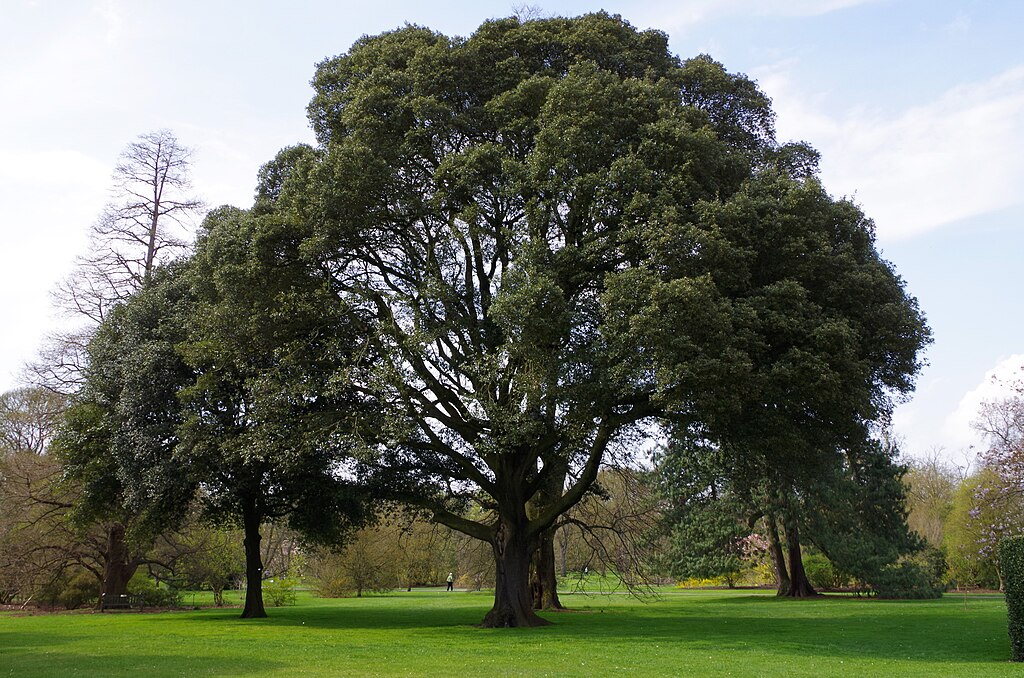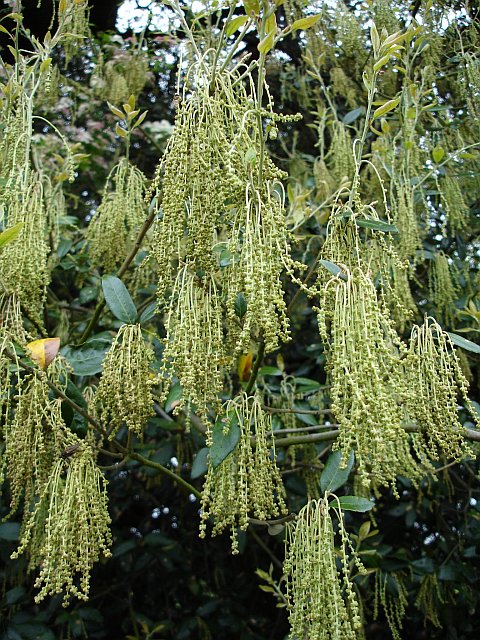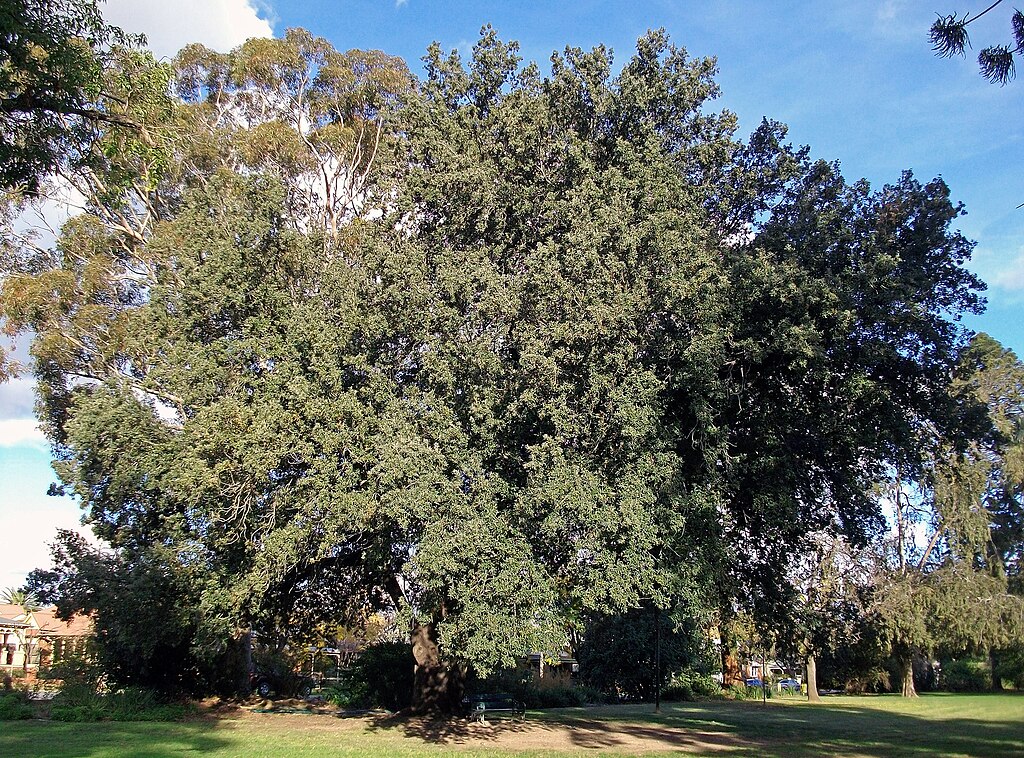Holm Oak (Quercus ilex), also known as the evergreen oak or holly oak, is a resilient tree native to the Mediterranean region. It thrives in a variety of habitats, from coastal areas to mountainous regions, and can grow in poor soils where other trees struggle. The tree typically reaches heights of 15 to 25 meters (50 to 80 feet), with a broad, rounded crown that provides dense shade. Its dark green, leathery leaves resemble holly leaves, which helps the tree conserve water and survive in hot, dry climates.
The bark of the Holm Oak is rough and gray, becoming deeply fissured as the tree ages. This tree is highly adaptable and can live for centuries, often forming the backbone of Mediterranean forests. Its acorns serve as a crucial food source for wildlife, including birds, deer, and wild boar. Holm Oak wood is dense and durable, making it valuable for construction and firewood.

(photo by Dinkum, CC BY-SA 3.0 https://creativecommons.org/licenses/by-sa/3.0, via Wikimedia Commons)
Holm Oak plays an essential ecological role in preventing soil erosion and maintaining biodiversity. It supports a wide range of species, from insects and fungi to birds and mammals. In areas with frequent wildfires, Holm Oak shows remarkable resilience. Its thick bark protects it from fire, and it can resprout from its base if damaged.
This tree is also important in traditional Mediterranean land-use systems, such as the dehesa in Spain, where Holm Oaks are managed alongside grazing livestock. These systems provide both economic and ecological benefits, sustaining rural communities while maintaining biodiversity.
Holm Oaks are often planted as ornamental trees in parks and gardens due to their hardiness and attractive appearance. Their ability to thrive in urban environments, tolerate pollution, and withstand drought makes them a popular choice for city landscaping. Despite the challenges of modern development and climate change, Holm Oak remains a symbol of Mediterranean resilience.

Photo by Penny Mayes
Scientific Classification of Holm Oak
| Category | Details |
|---|---|
| Kingdom | Plantae |
| Clade | Angiosperms |
| Clade | Eudicots |
| Clade | Rosids |
| Order | Fagales |
| Family | Fagaceae |
| Genus | Quercus |
| Scientific Name | Quercus ilex |

Quick Information
| Category | Details |
|---|---|
| Plant Type | Evergreen tree |
| Identification | Height: Typically 15 to 25 meters (50 to 80 feet) tall Leaves: Dark green, leathery, holly-like, 3-7 cm long Stem: Rough, gray bark that becomes deeply fissured with age Flowers: Inconspicuous, catkin-like; male and female flowers on the same tree Roots: Deep and wide-spreading root system Growth Habit: Broad, rounded crown Crown: Dense, spreading |
| Distribution | Native to the Mediterranean region, from southern Europe to North Africa and parts of the Middle East |
| Habitat | Grows in a variety of environments, including coastal regions, rocky hillsides, and mountainous areas; tolerant of poor soils and dry conditions |
| USDA Hardiness Zone | 7 through 11 |
| Growth Rate | Slow to moderate; typically grows about 30-60 cm (12-24 inches) per year |
| Lifespan | Long-lived, often over 200 years, with some trees reaching several centuries |
| Growing Conditions | Sunlight: Full sun to partial shade Soil: Well-drained, sandy or loamy soil; tolerant of poor and rocky soils Water: Drought-tolerant once established, prefers dry to moderately moist conditions |
| Drought Tolerance | High |
| Diseases | Susceptible to oak decline caused by pathogens like Phytophthora and pests such as the oak processionary moth |
| Pests | Oak processionary moth, scale insects, and wood-boring beetles |
| Reproductive System | Monoecious; male and female flowers on the same tree |
| Propagation | Through seeds (acorns) or vegetative methods such as grafting |
| Wildlife Value | Provides habitat and food for various species, including insects, birds, and mammals; acorns are a crucial food source for wildlife |
| Uses | Wood used for construction, firewood, and charcoal; acorns used as animal feed; planted as an ornamental tree in urban areas and parks |
| IUCN Conservation Status | Not currently listed as threatened, but some populations face pressure from land use changes and climate change |
